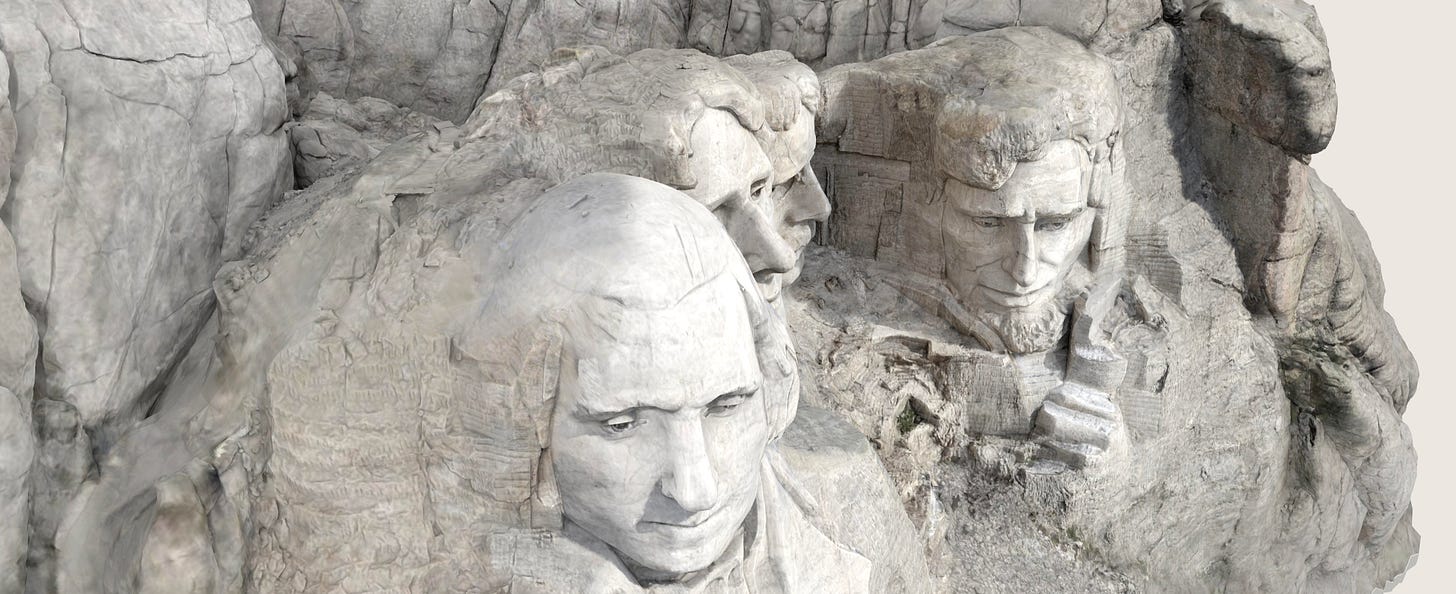🗿 From the mountain to the grave: How 3D is changing the way we see stories
Hey folks! Thanks to Mark Zuckerberg’s awful avatars and all those awkward VR headsets gathering dust, 3D storytelling has always felt like a gimmick to me. But I recently came across two pieces from The New York Times that changed my mind. For once, the tech doesn’t distract: it reveals the world in ways flat images and text simply can’t.
Let me show you what convinced me.
First up: Mount Rushmore. The NYT piece begins with a distinctly Trumpian fantasy, his face joining Washington, Jefferson, Roosevelt, and Lincoln in granite. “President Trump has made no secret of his fondness for Mount Rushmore and his desire to join its rock-star lineup,” it notes. But geology has other plans. The rock simply can’t take another carving.
What makes the piece stand out is how it uses a 3D model from CyArk to guide the story. As you scroll, the mountain shifts: angled views, close-ups, even a look behind the faces to reveal a deep canyon in the rock. It’s not interactive, but it feels immersive. You’re not just reading about geology and presidential ego; you’re right there.
Could the story work without it? Probably. But the 3D brings it to life, grounding the political theatre in physical reality. The rock becomes a character of its own, immovable and entirely uninterested in Trump’s legacy.
The second piece couldn’t be more different. It’s about mass graves in Syria, specifically, a trench in the Najha cemetery used by the Assad regime to bury thousands in secret. The Times recreated the site in 3D using photogrammetry, stitching together hundreds of photos to form a model.
From the first screen, you’re dropped straight into the trench. The camera moves through the grave with a chilling effect. You see the scale in a way words can’t match. The team also explains how they built the model, what was based on photos, and what came from interviews. That transparency matters. So does the choice to show, not just tell.
What these stories get right is restraint. The 3D is there to clarify. You’re not told the mountain can’t hold another face — you see the fragile angles behind the stone. You’re not asked to imagine a mass grave — you’re flown through it. The models hold your gaze just long enough for the weight of the story to settle in. That’s the power, not of the tech itself, but of knowing exactly when and how to use it.
And that’s it for today! Thanks for reading! If you enjoy the newsletter, share it with a friend—or a dozen. And if you really enjoyed it, consider upgrading to a paid subscription: it helps support my work and means a lot.
Elia Kabanov is a science writer covering the past, present and future of technology (@metkere)
Cover art: Elia Kabanov feat. DALL-E. Illustrations: The New York Times.




